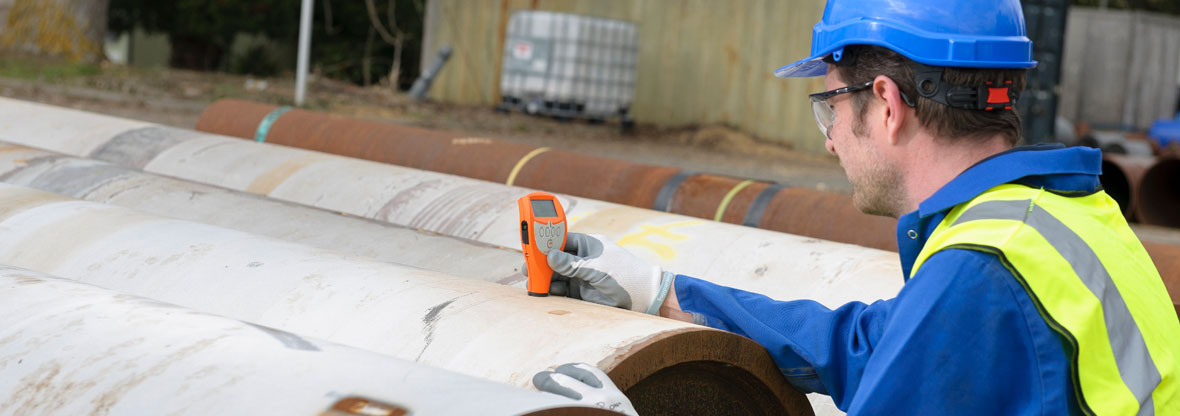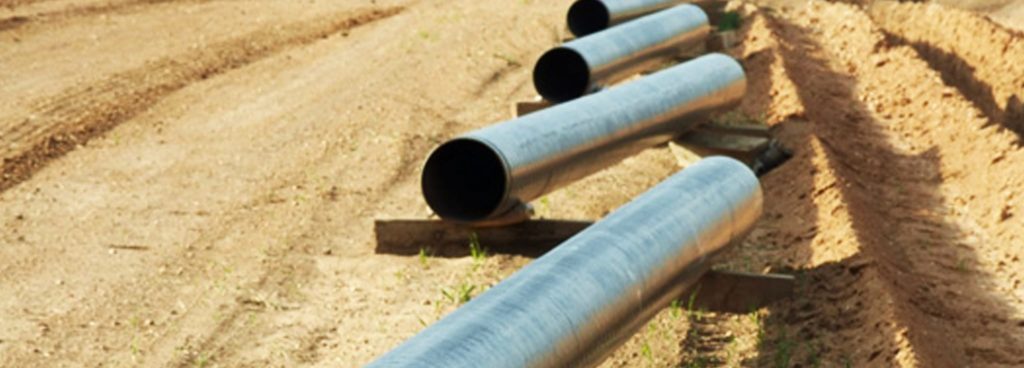Comprehensive Guide to Pipeline Welding Evaluation: Making Sure Honesty and Security in Pipeline Building and Upkeep
The honesty and safety and security of pipes are paramount in today's infrastructure landscape, highlighting the vital function of welding evaluation in pipeline building and construction and upkeep. An extensive guide on this subject not just highlights the requirement of examining weld top quality yet also attends to the different inspection techniques readily available, such as ultrasonic and radiographic testing. By comprehending common problems and their ramifications, stakeholders can implement finest practices that ensure compliance and durability. However, the intricacies associated with welding evaluation raise important concerns concerning sector criteria and the developing modern technologies that might redefine these techniques.

Importance of Welding Examination
Welding assessment plays a vital duty in guaranteeing the integrity and safety of pipe systems. It acts as a basic process that confirms the top quality and reliability of welded joints, which are frequently the most prone points in pipe construction. Through organized examination, examiners can determine prospective issues such as splits, porosity, and insufficient combination, which may compromise the architectural stability of the pipe.
The relevance of welding evaluation prolongs past simple conformity with market requirements; it likewise safeguards public health and wellness and the environment. Detailed assessments can improve the longevity of pipe systems, reducing the demand for pricey repair work and downtime.
In addition to guaranteeing security and compliance, welding inspection cultivates a culture of quality control within organizations. By focusing on inspection throughout the welding procedure, business can construct a track record for dependability and excellence, eventually bring about increased customer self-confidence and service possibilities (Pipeline Welding Inspection). Hence, the significance of welding evaluation can not be overemphasized in the context of pipeline building and maintenance
Secret Welding Procedures
Various welding procedures are employed in pipeline building, each with its own benefits and applications. Amongst one of the most commonly utilized approaches are Shielded Steel Arc Welding (SMAW), Gas Tungsten Arc Welding (GTAW), and Gas Metal Arc Welding (GMAW) SMAW is preferred for its flexibility and capability to execute well in numerous environmental conditions, making it appropriate for area applications.
GTAW, typically referred to as Tungsten Inert Gas (TIG) welding, is recognized for its capacity to create high-quality welds with exceptional control over warm input, making it optimal for thin-walled pipes and stainless steel products. GMAW, or Steel Inert Gas (MIG) welding, provides high deposition rates and is efficient for large tasks, commonly utilized in the fabrication of pipelines in controlled settings.
Additionally, Immersed Arc Welding (SAW) is used for its deep penetration and high productivity, especially in the building and construction of large-diameter pipes. Each of these procedures adds to the overall integrity and safety and security of pipe building and constructions, allowing welders to choose one of the most appropriate method based on material kind, task requirements, and environmental problems. Comprehending these essential welding processes is essential for effective pipeline welding assessment.
Common Issues and Their Effect

Porosity, defined by little gas pockets entraped within the weld, compromises the product and can result in leaks. Cracks, which might take place due to thermal tensions or improper air conditioning, can result and circulate in architectural failure under pressure. Undercutting, where the base metal is eroded along the weld grain, decreases the efficient cross-section of the pipeline, boosting the risk of fracture.
Incomplete fusion takes place when the weld metal does not effectively bond with the base metal, causing weak areas that might stop working under tension. Slag incorporation, the entrapment of non-metallic product within the weld, can also weaken the joint's honesty. Recognizing and resolving these problems early in the building procedure is important to making certain the lasting integrity and safety of pipe systems, thus safeguarding both the setting and the framework.
Assessment Devices and strategies

Visual inspection is the first line of defense, allowing inspectors to identify surface area abnormalities, imbalance, or other noticeable issues. Ultrasonic screening utilizes high-frequency audio waves to spot inner problems, supplying accurate depth dimensions and defining defects without damaging the weld. Radiographic screening utilizes X-rays or gamma rays to generate pictures of the weld, enabling the identification of inner spaces, fractures, or inclusions.
Magnetic bit testing is especially effective for finding surface area and near-surface stoppages in ferromagnetic products. This technique involves click to find out more using a magnetic area and great iron particles to the weld, revealing problems via the build-up of particles at imperfection websites.
In enhancement to these strategies, specialized devices such as automated ultrasonic testing equipment and electronic radiography systems improve assessment precision and efficiency, guaranteeing a thorough analysis of pipeline welds throughout building and upkeep.
Ideal Practices for Compliance
Sticking to best techniques for conformity in pipe welding assessment is important for guaranteeing the integrity and security of the framework. Organizations has to establish an extensive top quality administration system that aligns with industry standards such as ASME, API, and AWS. This includes creating thorough welding procedures that define the certifications, techniques, and materials required for welders.
Regular training and certification of evaluation personnel are important to preserve high competency degrees. Examiners need to be familiar with various non-destructive screening (NDT) techniques, including ultrasonic testing, Resources radiographic screening, and visual assessment, to successfully identify possible problems.
Documents plays a crucial role in conformity; preserving exact documents of evaluations, weld treatments, and workers qualifications assists to make certain traceability and liability. Set up audits and reviews of welding practices should be conducted to identify locations for improvement and make certain adherence to established procedures.

Verdict
In verdict, the execution of rigorous welding inspection procedures is paramount for making sure the honesty and safety and security of pipeline construction and maintenance. Continual renovation in assessment processes will add to the durability and dependability of pipeline systems, underscoring the critical function of welding inspection in the market.
The integrity and safety and security of pipes are extremely important in today's facilities landscape, highlighting the critical role of welding assessment in pipeline building and construction and upkeep. Recognizing these essential welding procedures is important for efficient pipe welding examination.
Adhering to finest practices for conformity in pipeline welding inspection is critical for making certain the stability and safety and security of the infrastructure.In final thought, the application of extensive welding assessment methods is critical for making sure the honesty and safety and security of pipe building and upkeep. Continual renovation in inspection procedures will certainly contribute to the longevity and integrity of pipe systems, emphasizing the important function of welding assessment in the industry.